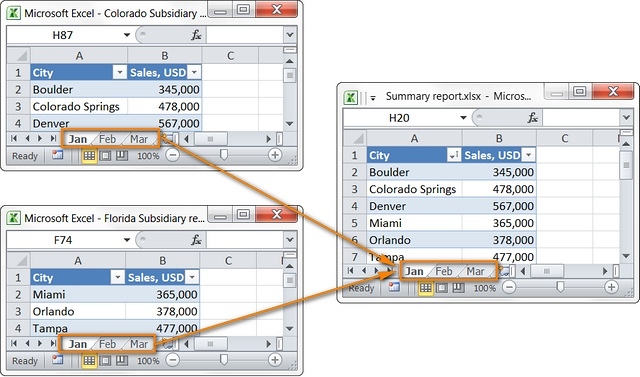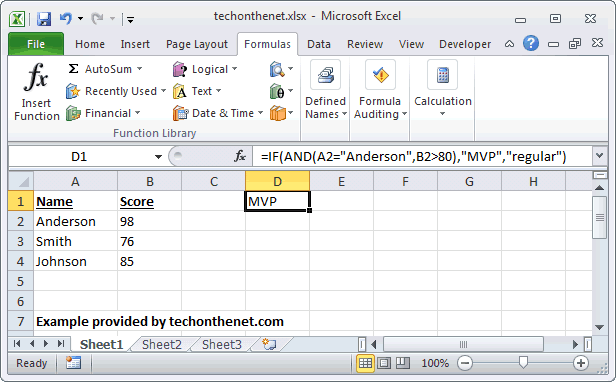
How to Tell If Your Business Has Outgrown Excel
For the most part, every business uses Excel in some manner. It’s the world’s “most popular productivity tool.” You probably use to organize your ideas, track information, tally receipts, manage contacts, calculate revenue, or a million other reasons.
Surprisingly, many businesses are using Microsoft Excel as their primary data storage and analysis tool after they’ve outgrown it. They work with files that are years old. They’re unaware that their current process is actually costing them productivity.
Excel works at a basic level when the company’s needs are few and light. Eventually, however, the business’ data requirements overtake Excel’s abilities. At this point, Excel stops being a tool and starts becoming an obstacle that holds the business back.
Here are some signs that you’ve outgrown Excel.
[content_upgrade cu_id=”189″]When you’ve decided to move away from Excel, download our free guide to learn the different options available.[content_upgrade_button]Click Here[/content_upgrade_button][/content_upgrade]
 Image: ablebits.com
Have you ever looked through a spreadsheet and felt the data wasn’t right? “Where are October’s revenue numbers?” you ask. Or maybe, “I swear Jenny inputted those sales figures.” Often this happens because you’re looking at the wrong version of the spreadsheet.
Version control is the manner in which changes to software, websites, and collections of information are managed. Every modification is kept together so all users are aware. The best version control systems save older versions of the document or data set so you can return to them at any time.
Excel lacks any type of version control feature. If you sent a file to three people, and each person adds their own data, you now have four different versions (theirs plus yours). To put everything together, you have to manually copy and paste their data into a single a file.
This isn’t a big deal if you’re only working with a few rows and columns, but it can be become a tremendous hassle when you have large data sets and formulas. Plus, it’s a tedious process that isn’t necessary with modern tools.
Furthermore, each time you’re forced to reconcile Excel files is an opportunity to make a mistake. A cell was accidentally left blank. A “0.2” was supposed to be “0.02.” A formula was mistakenly deleted. Investment bank JPMorgan claims a simple spreadsheet error cost them $6 billion.
Maybe you noticed something was missing this time, but have you always caught the error? Maybe Jenny forgot to submit her updated file last week and no one realized. Those figures have disappeared.
You should be using an application with a relational database that allows multiple users to interact with the data. With proper access and version controls, you’ll always have accurate, easy-to-manipulate information.
Image: ablebits.com
Have you ever looked through a spreadsheet and felt the data wasn’t right? “Where are October’s revenue numbers?” you ask. Or maybe, “I swear Jenny inputted those sales figures.” Often this happens because you’re looking at the wrong version of the spreadsheet.
Version control is the manner in which changes to software, websites, and collections of information are managed. Every modification is kept together so all users are aware. The best version control systems save older versions of the document or data set so you can return to them at any time.
Excel lacks any type of version control feature. If you sent a file to three people, and each person adds their own data, you now have four different versions (theirs plus yours). To put everything together, you have to manually copy and paste their data into a single a file.
This isn’t a big deal if you’re only working with a few rows and columns, but it can be become a tremendous hassle when you have large data sets and formulas. Plus, it’s a tedious process that isn’t necessary with modern tools.
Furthermore, each time you’re forced to reconcile Excel files is an opportunity to make a mistake. A cell was accidentally left blank. A “0.2” was supposed to be “0.02.” A formula was mistakenly deleted. Investment bank JPMorgan claims a simple spreadsheet error cost them $6 billion.
Maybe you noticed something was missing this time, but have you always caught the error? Maybe Jenny forgot to submit her updated file last week and no one realized. Those figures have disappeared.
You should be using an application with a relational database that allows multiple users to interact with the data. With proper access and version controls, you’ll always have accurate, easy-to-manipulate information.
 Yes, Excel is a beefy calculator. Experienced users can create impressive formulas, but that’s exactly what you need – experienced users. Most businesses don’t have someone on staff with years of experience writing Excel functions. It’s better to use a solution that doesn’t require years of learning.
If you find yourself regularly using the heavy-hitting functions like VLOOKUP, PIVOT and SUMIF, you’ve reached the peak of Excel’s ability. The program doesn’t have any more advanced tools to aggregate, manipulate or analyze data.
Furthermore, Excel is not an analytical tool. It can’t evaluate historical data or make predictions about the future. It can’t pull data from somewhere else or produce elaborate reports.
Yes, Excel is a beefy calculator. Experienced users can create impressive formulas, but that’s exactly what you need – experienced users. Most businesses don’t have someone on staff with years of experience writing Excel functions. It’s better to use a solution that doesn’t require years of learning.
If you find yourself regularly using the heavy-hitting functions like VLOOKUP, PIVOT and SUMIF, you’ve reached the peak of Excel’s ability. The program doesn’t have any more advanced tools to aggregate, manipulate or analyze data.
Furthermore, Excel is not an analytical tool. It can’t evaluate historical data or make predictions about the future. It can’t pull data from somewhere else or produce elaborate reports.
You’re constantly reconciling spreadsheets
 Image: ablebits.com
Have you ever looked through a spreadsheet and felt the data wasn’t right? “Where are October’s revenue numbers?” you ask. Or maybe, “I swear Jenny inputted those sales figures.” Often this happens because you’re looking at the wrong version of the spreadsheet.
Version control is the manner in which changes to software, websites, and collections of information are managed. Every modification is kept together so all users are aware. The best version control systems save older versions of the document or data set so you can return to them at any time.
Excel lacks any type of version control feature. If you sent a file to three people, and each person adds their own data, you now have four different versions (theirs plus yours). To put everything together, you have to manually copy and paste their data into a single a file.
This isn’t a big deal if you’re only working with a few rows and columns, but it can be become a tremendous hassle when you have large data sets and formulas. Plus, it’s a tedious process that isn’t necessary with modern tools.
Furthermore, each time you’re forced to reconcile Excel files is an opportunity to make a mistake. A cell was accidentally left blank. A “0.2” was supposed to be “0.02.” A formula was mistakenly deleted. Investment bank JPMorgan claims a simple spreadsheet error cost them $6 billion.
Maybe you noticed something was missing this time, but have you always caught the error? Maybe Jenny forgot to submit her updated file last week and no one realized. Those figures have disappeared.
You should be using an application with a relational database that allows multiple users to interact with the data. With proper access and version controls, you’ll always have accurate, easy-to-manipulate information.
Image: ablebits.com
Have you ever looked through a spreadsheet and felt the data wasn’t right? “Where are October’s revenue numbers?” you ask. Or maybe, “I swear Jenny inputted those sales figures.” Often this happens because you’re looking at the wrong version of the spreadsheet.
Version control is the manner in which changes to software, websites, and collections of information are managed. Every modification is kept together so all users are aware. The best version control systems save older versions of the document or data set so you can return to them at any time.
Excel lacks any type of version control feature. If you sent a file to three people, and each person adds their own data, you now have four different versions (theirs plus yours). To put everything together, you have to manually copy and paste their data into a single a file.
This isn’t a big deal if you’re only working with a few rows and columns, but it can be become a tremendous hassle when you have large data sets and formulas. Plus, it’s a tedious process that isn’t necessary with modern tools.
Furthermore, each time you’re forced to reconcile Excel files is an opportunity to make a mistake. A cell was accidentally left blank. A “0.2” was supposed to be “0.02.” A formula was mistakenly deleted. Investment bank JPMorgan claims a simple spreadsheet error cost them $6 billion.
Maybe you noticed something was missing this time, but have you always caught the error? Maybe Jenny forgot to submit her updated file last week and no one realized. Those figures have disappeared.
You should be using an application with a relational database that allows multiple users to interact with the data. With proper access and version controls, you’ll always have accurate, easy-to-manipulate information.
You waste time waiting for Excel load
The most current version of Excel allows you to store up to a million rows of information. For most businesses, that’s more than enough, but that’s not where they reach a limit. Typical office computers start to lag when they access an Excel file of 100,000 rows. If your computer isn’t modern, it will take 5-10 minutes to open a file that size. A scroll through the data can create 1-2 minute lags. Over time, those delays add up. I have spoken to employees of businesses who manage their day around these delays. They open the file before they go to lunch so it’s available when they return. They keep another task in front of them to stay busy when the file starts to crawl. Their spreadsheet is supposed to improve their productivity, but it’s actually slowing them down. That’s no way to operate. If you’re working with large groups of information, a spreadsheet isn’t sufficient. You need a proper database with an interface or dashboard to interact with it.You need stronger calculations
 Yes, Excel is a beefy calculator. Experienced users can create impressive formulas, but that’s exactly what you need – experienced users. Most businesses don’t have someone on staff with years of experience writing Excel functions. It’s better to use a solution that doesn’t require years of learning.
If you find yourself regularly using the heavy-hitting functions like VLOOKUP, PIVOT and SUMIF, you’ve reached the peak of Excel’s ability. The program doesn’t have any more advanced tools to aggregate, manipulate or analyze data.
Furthermore, Excel is not an analytical tool. It can’t evaluate historical data or make predictions about the future. It can’t pull data from somewhere else or produce elaborate reports.
Yes, Excel is a beefy calculator. Experienced users can create impressive formulas, but that’s exactly what you need – experienced users. Most businesses don’t have someone on staff with years of experience writing Excel functions. It’s better to use a solution that doesn’t require years of learning.
If you find yourself regularly using the heavy-hitting functions like VLOOKUP, PIVOT and SUMIF, you’ve reached the peak of Excel’s ability. The program doesn’t have any more advanced tools to aggregate, manipulate or analyze data.
Furthermore, Excel is not an analytical tool. It can’t evaluate historical data or make predictions about the future. It can’t pull data from somewhere else or produce elaborate reports.

